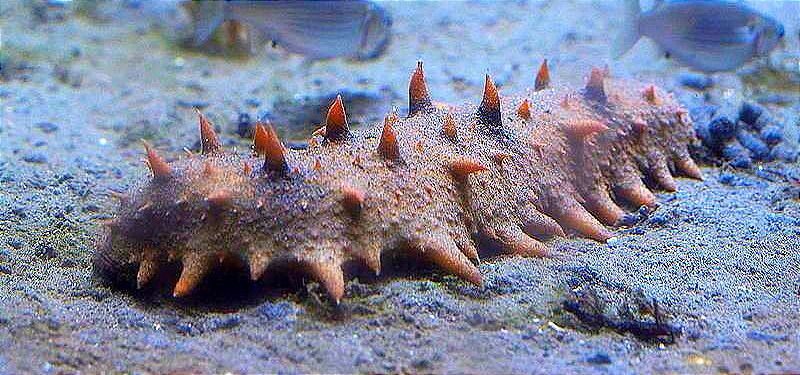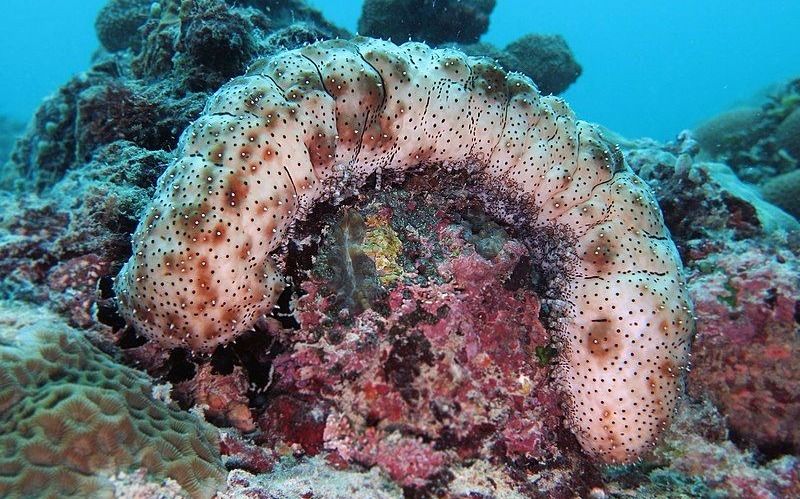Why Is Japanese Sea Cucumber So Expensive?
Japanese sea cucumbers command high prices, largely driven by their acclaimed health benefits and soaring demand. Revered for their nutritional richness, these marine delicacies have become a sought-after treasure in global cuisine, making them a symbol of luxury and wellness.

In the health and wellness realm, sea cucumber is making waves. A staple in Chinese culinary and medicinal practices, it's now emerging as a sought-after supplement due to recent research highlighting its antioxidant and immune-enhancing properties. However, as a luxury seafood, its high cost often restricts it to the affluent.
What is Sea Cucumber?
Echinoderms encompass animals like sea cucumbers, starfish, and sea urchins. Resembling their namesake, sea cucumbers possess tentacle-like feet for movement and feeding. To deter predators, some expel toxic organs, which later regenerate. These marine creatures range in size from under an inch to six feet, inhabiting a vast array of marine habitats globally, predominantly the ocean floor. Their young drift as plankton. As scavengers, sea cucumbers consume algae, tiny invertebrates, and detritus, using their tube feet to feed.
History Of Sea Cucumber
Namako, or sea cucumber, is deeply rooted in Japanese culinary history, with exports tracing back to the Edo period. Japan pioneered sea cucumber cultivation, where wild larvae are nurtured in controlled settings and then reintroduced to the ocean at the right size.
Historical Chinese texts from the Ming and Qing periods highlighted sea cucumbers for their culinary and medicinal benefits. Their resemblance to male anatomy made them popular, given traditional beliefs about consuming look-alike foods for specific body benefits. They earned the title "sea ginseng" due to their nutrient richness.
Since the 1980s, global demand surged due to Asian culinary traditions and Western pharmaceutical interest, with many nations diving into the trade. Their skin's significant fucosylated glycosaminoglycan content has been used in Asia for arthritis relief and, more recently, in Europe for cancer treatment and clot prevention.
The Most Expensive Variety
The prickly sea cucumber, characterized by its dark elongated body and soft spines, is the priciest among its kind, renowned for its crunchy texture. It's predominantly sourced from China's Shandong and Liaodong Peninsula, Japan's Kanto, Kansai, Aomori, and Hokkaido regions, and Korea.
Japanese varieties, Apostichopus japonicus, especially from Aomori are particularly prized for their size, flavor and quality, justifying their premium cost.
In Japan, where they're termed "namako," these echinoderms have a special place in New Year celebrations. Japan's cultivation technique involves fostering wild larvae in regulated environments before their ocean release. The top species, manamako, varies in color from red (aka-namako) to blue (ao-namako) to black (kuro-namako) based on their habitats.
How Much Does The Most Expensive Sea Cucumber Cost?
The high-grade Japanese thorny sea cucumber can command prices up to $1,400 per pound.
Why is It So Expensive?

Contemporary Uses and Health Advantages of Sea Cucumbers
Sea cucumbers, a treasured delicacy in many Asian regions, have evolved from traditional dried consumption to modern methods like freeze-drying and braising. They grace dishes from stir-fries to soups, especially favored in colder seasons for their protective qualities.
Their skin contains fucosylated glycosaminoglycan, used in Asia for arthritis and drawing European interest for potential cancer treatments. Nutritionally, they're low in fat but high in protein and chondroitin sulfate, promoting muscle health, immunity, and aging resistance. Their protein content can aid diabetics in blood sugar regulation, while protein-rich diets support heart health and bone strength.
Rarity and Harvesting Difficulty
Japan's sea cucumber catches dropped from 10,300 tonnes in 2006 to 6,100 tonnes in 2020, largely due to illegal fishing by criminal organizations.
Harvesting them requires divers to venture into cold, deep waters, often braving challenging terrains and unpredictable weather. This labor-intensive and risky process directly impacts its premium price.
As their numbers dwindle, divers go deeper, increasing the dangers. In some tropical regions, undertrained divers risk paralysis due to decompression sickness, and there have been instances where divers lost their lives in pursuit of these sea cucumbers.
Extreme Prices: Common Varieties Vs. Japanese Sea Cucumber
Historically, sea cucumbers were treasured delicacies in Northeastern China, Japan, and Korea due to their scarcity. Now, with advancements in farming and broader fishing zones from North America to Australia, they've become more readily available and cost-effective. Today's markets often provide them pre-soaked, simplifying their culinary use.
However, not all sea cucumbers are equal in value. The spiny varieties, revered since ancient times, have seen their prices soar. They can cost dozens of times more than common types, with the underlying principle being: the more unique and spiky they appear, the higher their price. Of the staggering 1,250 species globally, the Japanese sea cucumber, known for its distinctive appearance, remains the crown jewel in terms of both rarity and expense.
Culinary Significance
In many cultures, especially in East Asian cuisines, sea cucumbers are considered a luxury seafood. They're often reserved for special occasions and celebrations. In Aomori, sea cucumbers are a staple in festive New Year feasts. The annual Yokohama Namako Fair in December showcases an array of dishes highlighting this marine delicacy.
Historically cherished by Asia's elite for its nutritional value, these unique sea snails were considered a protein-rich luxury. Presently, they are often dried, elegantly packaged, and gifted or reserved for special events.
Japan's Sea Cucumber Demand Soars Amid China's Shortage
Recent thermal anomalies in Liaoning Province, China, have had a severe impact on its sea cucumber cultivation, raising the potential for heightened import needs. Japan, a leading cultivator of the sought-after Apostichopus japonicus species, might see a spike in demand.
This event draws attention to the fragility of marine farming and the intricacy of worldwide trade dynamics. With the possible uptick in Chinese imports, Japan could solidify its pivotal position in the international sea cucumber market
In Conclusion
Sea cucumbers, a long-standing delicacy in Asian cuisine, are gaining global recognition not just for their unique taste but also for their potential health benefits. From arthritis remedies in Asia to cancer treatments in Europe, their medicinal properties are intriguing. Moreover, with diverse preparation methods ranging from stir-fries to soups, they offer a novel culinary experience. Given the associated health advantages, rich history, and the culinary appeal, trying sea cucumber might be a worthwhile venture for the adventurous palate. However, due to their rarity and the environmental concerns surrounding their harvest, it's crucial to source them responsibly.
Frequently Asked Question
Why Do People Eat Sea Cucumber?
A Delight for the Palate
If you've ever tried sea cucumber, you'd know that it offers a unique culinary experience. Its gelatinous texture combined with its subtle, sea-infused flavor makes it an exquisite addition to dishes. When prepared well, it can elevate a meal to gourmet status.
Health Benefits
Beyond just taste, sea cucumbers are believed to offer numerous health benefits. Rich in protein, vitamins, and minerals, they're often considered a nutritious addition to one's diet. Some studies even suggest that they might have anti-inflammatory properties and the potential to support joint health.
Cultural and Traditional Significance
In many Asian cultures, sea cucumbers are more than just food; they symbolize luxury, prosperity, and health. They're often gifted during special occasions, representing a wish for the recipient's well-being. It's an age-old tradition that still holds weight in modern times, making the sea cucumber a treasured commodity.
Why Is Sea Cucumber So Special?
An Ancient Delicacy
Did you know that sea cucumbers have been a part of human diets for centuries? Ancient Chinese texts mention them, and they've been a part of traditional medicines and dishes for ages.
Regenerative Abilities
One of the most fascinating things about sea cucumbers is their ability to regenerate. If they lose a part of their body due to a predator attack or an accident, they can regrow it. Imagine being able to grow back a lost limb! This incredible ability has made them a subject of interest for scientists and researchers.
Not Just a Food Item
While many savor the Japanese sea cucumber for its taste and nutritional benefits, it's also used in various skincare products. Its collagen-rich composition is believed to offer skin rejuvenating properties, making it a prized ingredient in the beauty industry.


